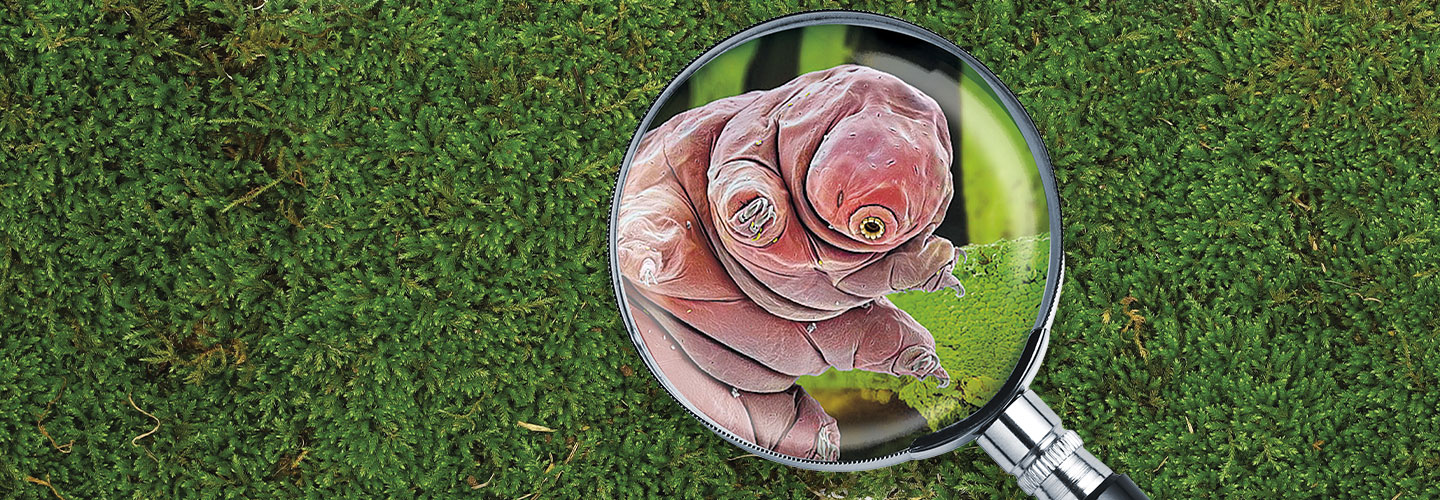On a rainy autumn day, a group of students gathered in a damp cemetery in Denmark. Carefully, they peeled moss and lichen—fuzzy green colonies of algae and fungus—from trees and gravestones. Then they placed these samples in coffee filters. The teens were searching for strange little animals living in the moss and lichen: tardigrades.
It was a rainy autumn day in Denmark. A group of students met in a damp cemetery. They searched for moss and lichen, fuzzy green colonies of algae and fungus. Carefully, they peeled them from trees and gravestones. Then they placed these samples in coffee filters. Strange little animals live in the moss and lichen, and the teens were looking for them. The animals are tardigrades.

